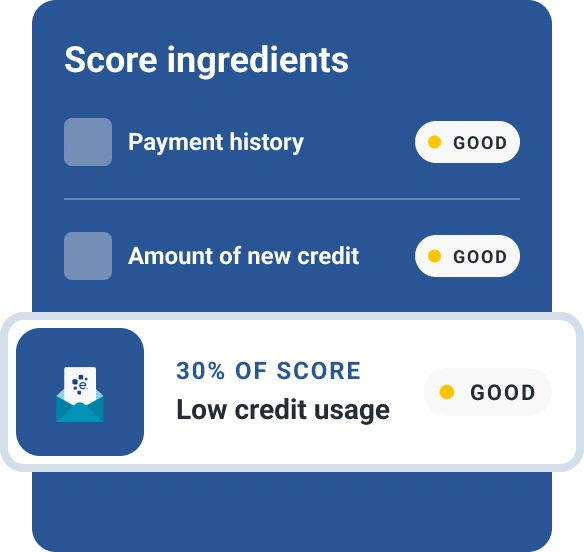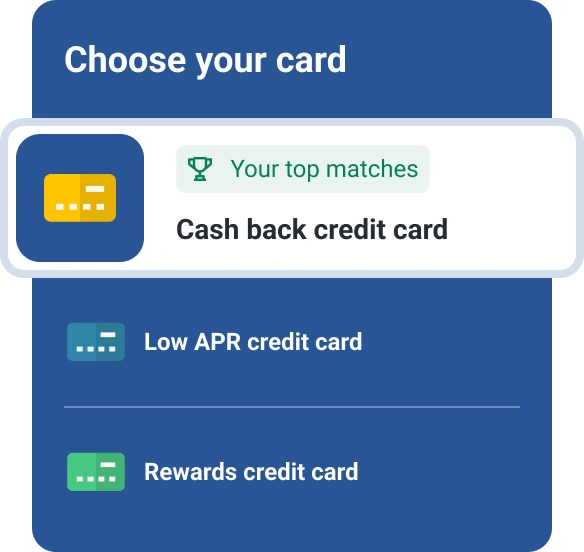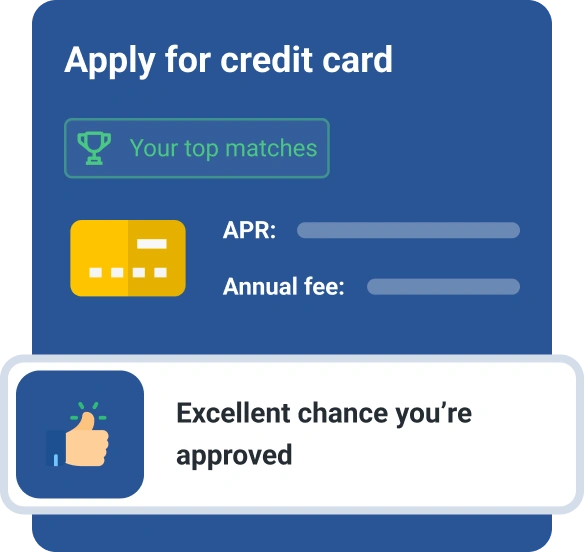What to Consider When Choosing a New Credit Card
Quick Answer
Consider these factors to find the credit card that best suits your financial needs and goals:

When you're looking for a new credit card, choosing the right one can seem daunting. With so many options in the marketplace to consider, it's easy to get lost in a sea of credit card features, rewards and terms.
Of course, interest rates, fees and other features are important factors, but identifying the best credit card for your wallet ultimately depends on how well it aligns with your personal financial needs and goals. Keep these six factors in mind when you're choosing a new credit card.
1. Credit Score Requirements
One of the most significant factors to consider in a new credit card is its credit score requirement, which can significantly impact your odds of approval and your account terms if you are approved.
Not all credit card issuers have (or share) minimum credit score requirements for their cards, but they may offer some general guidance. For example, certain cards may be better options for people who fall within specific credit score ranges, like "fair" or "very good."
The FICO® ScoreΘ, which is used by 90% of top lenders, ranges from 300 to 850 and is categorized into five ranges:
- Exceptional: 800-850
- Very good: 740-799
- Good: 670-739
- Fair: 580-669
- Poor: 300-579
Experian's card comparison tool can show you recommended FICO® Score ratings for each card. You can get your credit score for free from Experian to see where your FICO® Score stands and then apply for cards that align with your score. Or you may want to improve your score first, and then apply after it increases. Doing so can increase your chances of a successful application.
2. How You Plan to Use the Card
You'll also want to consider how you plan to use your new credit card and look for cards that best suit your needs. For example:
- If you'll use your new card for everyday purchases, look for a flat-rate rewards card.
- If you're willing to put in a little extra work to maximize your rewards, you could try to get several rewards cards that offer complementary bonus categories.
- If you travel abroad often, a credit card that doesn't charge foreign transaction fees could come in handy.
- If you need to finance a large purchase, consider a credit card that offers an introductory 0% annual percentage rate (APR) to spread out payments over time without accruing interest during the intro period.
- If you want to consolidate high-interest debt, look for a balance transfer credit card with a lower interest rate or a 0% intro APR. Keep in mind, these cards often charge a fee of at least 3% of the transfer amount.
- If you go on trips frequently, a travel rewards card offering airline or hotel rewards could lower your costs when you want to get away.
3. Fees
Credit card fees can impact your cost of using the card even if you never pay interest. Here are some the most substantial fees to consider:
- Annual fee: Getting a card with an annual fee is generally a bad idea if you don't spend enough to take advantage of the card's benefits. However, if the value of the card's rewards and benefits exceeds the fee, it may be worth paying the annual fee.
- Balance transfer fee: Balance transfer fees are often around 3% to 5% of your total balance transfer amount, or $30 to $50 for every $1,000 you transfer. You may save money by finding a card that charges a lower balance transfer fee.
- Late fee: You may obtain a credit card that doesn't charge late payment fees, although that is rare. Generally, card issuers impose late fees ranging from $30 to $41. Avoid late fees by creating payment reminders or setting up autopay for at least the minimum payment account. (This is also a key to protecting your credit.)
- Foreign transaction fee: A foreign transaction fee may apply when making purchases outside the U.S. or shopping online if the purchase isn't in U.S. dollars. You can save up to 2% or 3% per foreign transaction by choosing a credit card that doesn't charge this fee.
4. Annual Percentage Rates (APRs)
Your credit card's APR represents the interest rate you'll be charged should you carry a balance. Fortunately, you generally won't pay any interest on purchases if you pay off the card's entire balance each month.
When choosing a new credit card, a good APR to aim for is one that is lower than the average credit card interest rate, currently 20.92%, according to the most recent Federal Reserve data. Remember, excellent credit will be necessary to qualify for the lowest interest rates.
As you compare credit card APRs, keep in mind a single credit card can have multiple APRs, including:
- Ongoing APR: This charge is the standard rate you'll pay in interest when you carry a balance.
- Introductory 0% APR: Card issuers often offer a promotional 0% intro APR rate on purchases and/or balance transfers to entice you to open a new credit card account. This promotional period typically ranges from 12 to 21 months, after which the card's standard rate applies to any remaining balance.
- Penalty APR: Many credit card companies charge a higher penalty APR when a cardholder's payment is at least 60 days late.
- Cash advance APR: Credit card cash advances may carry a separate (often higher) APR that applies even if you have a 0% intro APR offer for purchases and balance transfers.
5. Rewards
Rewards credit cards can offer you cash back, points or miles on every eligible purchase. Generally, rewards cards use one of three earnings styles:
- Flat rate>: These rewards earn the same rate for every eligible purchase, no matter where you use your card. The best cash back cards can earn unlimited 2% cash rewards on purchases without the need for you to concern yourself with bonus categories (more on that in a second).
- Tiered rate: Tiered rewards offer bonus rewards on select bonus categories, such as travel, dining, groceries and gas. Card issuers can set higher rates on specific spending categories, which can help you maximize your rewards if you spend heavily in those categories.
- Rotating: This style of earning rewards involves bonus categories that rotate periodically, such as every quarter. With some cards, you must opt in to the rotating categories each quarter.
In addition to the earnings style, consider the kind of rewards you want to earn.
- Cash back rewards: Cash back may be the easiest to use as you can often redeem the rewards for statement credits or a check, or transfer them to an eligible bank account.
- Rewards points: Cards that earn rewards points and miles can be very flexible and potentially offer more value. For example, you can often receive a higher redemption value using the points for travel than redeeming for cash back.
- Co-branded cards: Many companies partner with card issuers to create co-branded cards like those you see for popular airlines and hotels. These cards can be a good option to earn rewards with companies you frequently purchase from.
Choosing which type of rewards card you prefer may depend on your spending habits and your willingness to put in extra work for rewards. Having a strategy for earning and redeeming miles is a fun and fruitful hobby for some. Others prefer the simplicity of cash back.
6. Credit Limit
Your credit card limit is the maximum amount of money you can borrow on your credit card. Your initial credit limit may depend on your credit history, credit score, relationship with the issuer and other factors. You generally won't know your exact credit limit until after you apply and get approved.
As you might expect, credit limits vary by card—and by cardholder. Some cards have different minimums depending on the version of the card you're approved for. As you research credit cards, you may come across minimum credit limits listed in the terms and conditions for some cards.
Keep in mind, your initial credit limit typically isn't your final one. Many card issuers automatically review your account for a credit limit increase, sometimes after as few as six months. You can also request a credit limit on an open card through your account dashboard or by contacting the card issuer by phone. Be aware the request could result in a hard inquiry, which may cause a temporary dip in your credit score,
Focusing on improving your credit, paying your bill on time and updating the card issuer with your new income when it increases could also lead the issuer to increase your credit limit without a request.
Boost Your Credit and Your Credit Card Options
Good credit improves your odds of qualifying for credit cards and receiving the lowest interest rates. Similarly, 0% introductory APR credit cards and premium cards offering the most valuable perks often require excellent credit. Before you apply, check your Experian credit report and credit score for free to learn where your credit stands.
You also have the right to dispute any errors you find on your credit report to potentially increase your credit score. Also consider Experian Boost®ø, which helps you raise your FICO® Score by giving you credit for paying your utilities, streaming services, rent and other bills. Securing even a slightly lower interest rate may save you thousands of dollars over time.
Don’t apply blindly
Apply for credit cards confidently with personalized offers based on your credit profile. Get started with your FICO® Score for free.
See your offersAbout the author
Tim Maxwell is a former television news journalist turned personal finance writer and credit card expert with over two decades of media experience. His work has been published in Bankrate, Fox Business, Washington Post, USA Today, The Balance, MarketWatch and others. He is also the founder of the personal finance website Incomist.
Read more from Tim

